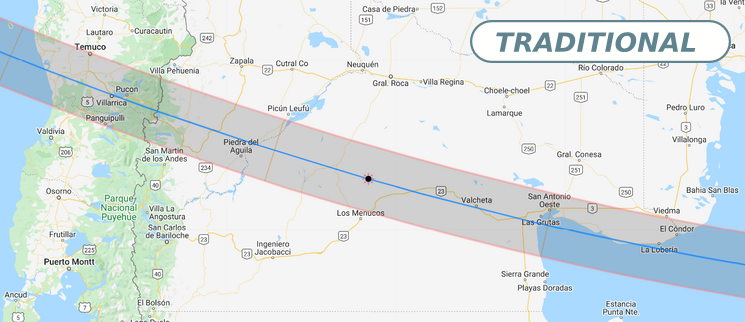Changes in the surface irradiance during the total solar eclipse 2020 in Valcheta, Argentina
DOI:
https://doi.org/10.4279/pip.150002Keywords:
Surface irradiance, Total Eclipse 2020Abstract
On December 14, 2020, southern South America experienced a total solar eclipse close to the solar noon. The path of totality, about 90 km wide, extended over the continental region from the Chilean west coast to the Argentine east coast, passing through the provinces of Neuquén, Río Negro and the extreme south of Buenos Aires. In order to study the effects on the atmosphere produced by the total eclipse, the Servicio Meteorológico Nacional Argentino (SMN) and Instituto de Investigaciones Científicas y Técnicas para la Defensa (CITEDEF) carried out a surface radiometric monitoring campaign in Valcheta (40.69°S; 66.15°W), Río Negro, Argentina. In this work, we explore the global surface solar irradiance on a horizontal plane (GHI) with the main objective of quantifying the changes in this parameter for cloudy and clear sky atmospheric conditions, combining ground-based measurements and modeling. A solar limb-darkening function was successfully implemented in the calculation of the irradiance at the top of the atmosphere (TOA) during the eclipse. We estimated a significant GHI attenuation of 41 % between the first (C1) and last (C4) contacts of eclipse compared to similar atmospheric conditions without the total eclipse, which represent a daily reduction of 12 %. In terms of irradiation, a reduction of 3360.1 KJ/m2 was calculated.

Downloads
Published
How to Cite
Issue
Section
License
Copyright (c) 2023 Pablo Facundo Orte, Eduardo Fernández Lajús, Romina P. Di Sisto, Elian A. Wolfram, Anabela R. Lusi, M. Gabriela Nicora, Raúl L. D'Elia, Federico Verstraeten, Sebastián Papandrea, Facundo Carmona

This work is licensed under a Creative Commons Attribution 4.0 International License.
Authors agree to the PIP Copyleft Notice









